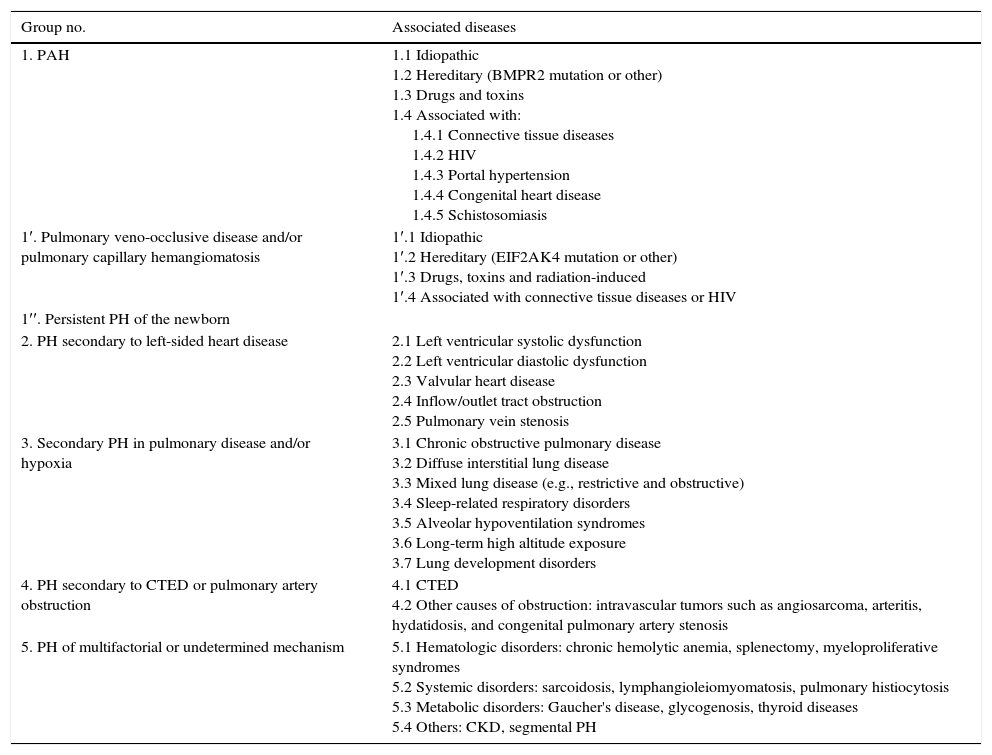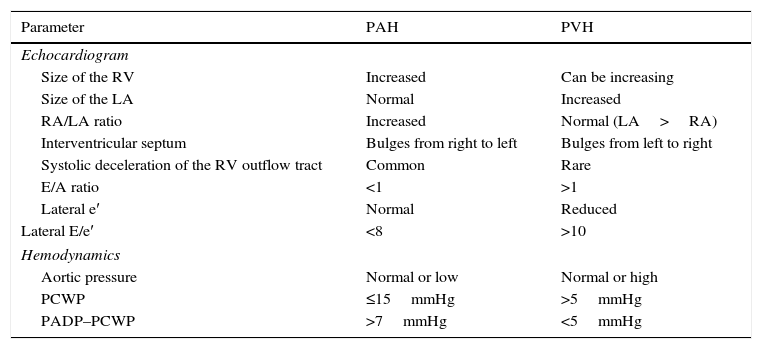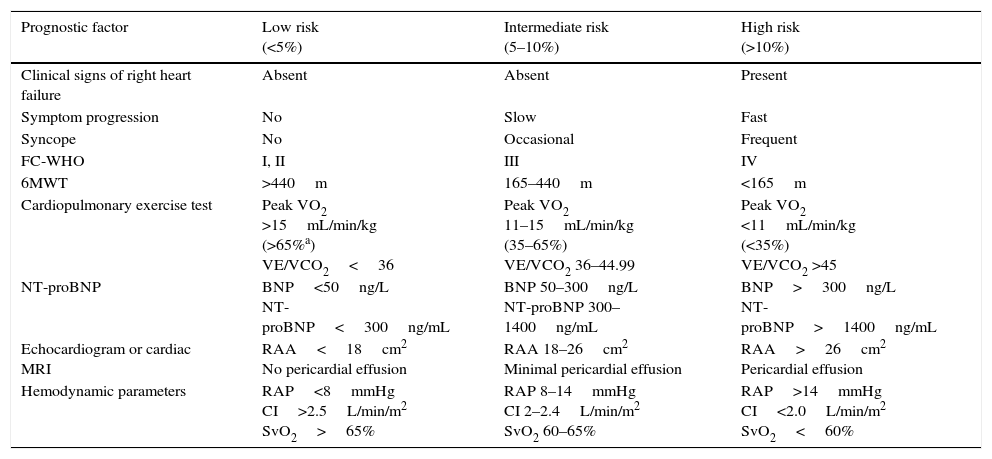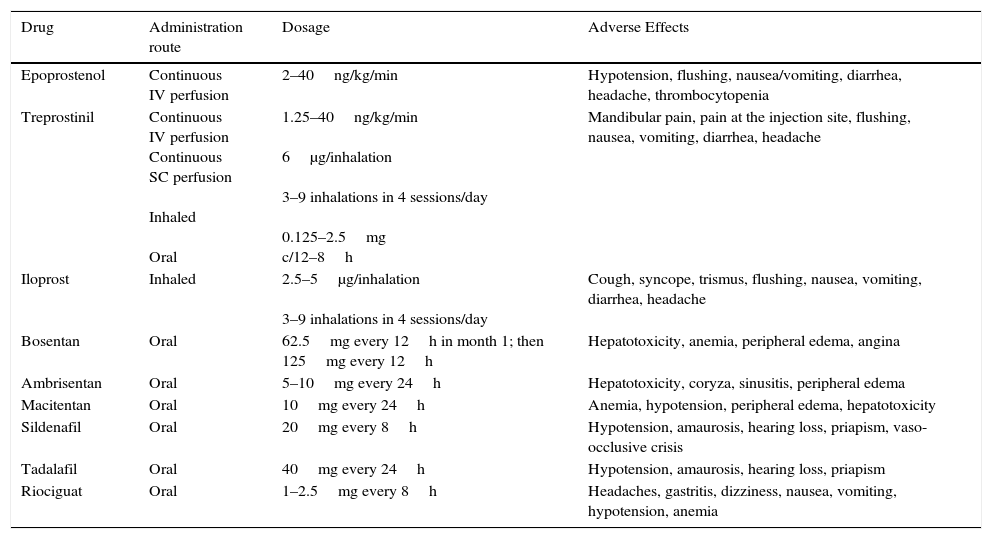Pulmonary arterial hypertension is a rare and progressive disease that mainly affects the pulmonary arterioles (precapillary), regardless of the triggering etiology. The prevalence of pulmonary hypertension and pulmonary arterial hypertension in Spain is estimated at 19.2 and 16 cases per million inhabitants, respectively. The diagnosis of pulmonary arterial hypertension is based on hemodynamic criteria (mean pulmonary artery pressure ≥25mmHg, pulmonary capillary wedge pressure ≤15mmHg and pulmonary vascular resistance >3 Wood units) and therefore requires the implementation of right cardiac catheterisation. Sequential therapy with a single drug has been used in clinical practice. However, recent European guidelines recommend combined initial therapy in some situations. This review conducts a critical update of our knowledge of this disease according to the latest guidelines and recommendations.
La hipertensión arterial pulmonar es una enfermedad rara y progresiva que afecta principalmente a las arteriolas pulmonares (precapilar), independientemente de la etiología desencadenante. En España se estima que la prevalencia de hipertensión pulmonar y de hipertensión arterial pulmonar es de 19,2 y 16 casos por millón de habitantes, respectivamente. El diagnóstico de hipertensión arterial pulmonar se basa en criterios hemodinámicos (presión media de la arteria pulmonar ≥25mmHg, presión de enclavamiento capilar pulmonar ≤15mmHg, y resistencia vascular pulmonar >3 unidades Wood) y por tanto requiere la realización de un cateterismo cardiaco derecho. En la práctica clínica se ha utilizado la terapia secuencial con un solo fármaco. Sin embargo, las recientes guías europeas recomiendan la terapia combinada de inicio en algunas situaciones. En esta revisión se realiza una actualización crítica de los conocimientos sobre esta enfermedad de acuerdo a las últimas guías y recomendaciones.
Article
Diríjase desde aquí a la web de la >>>FESEMI<<< e inicie sesión mediante el formulario que se encuentra en la barra superior, pulsando sobre el candado.

Una vez autentificado, en la misma web de FESEMI, en el menú superior, elija la opción deseada.

>>>FESEMI<<<










